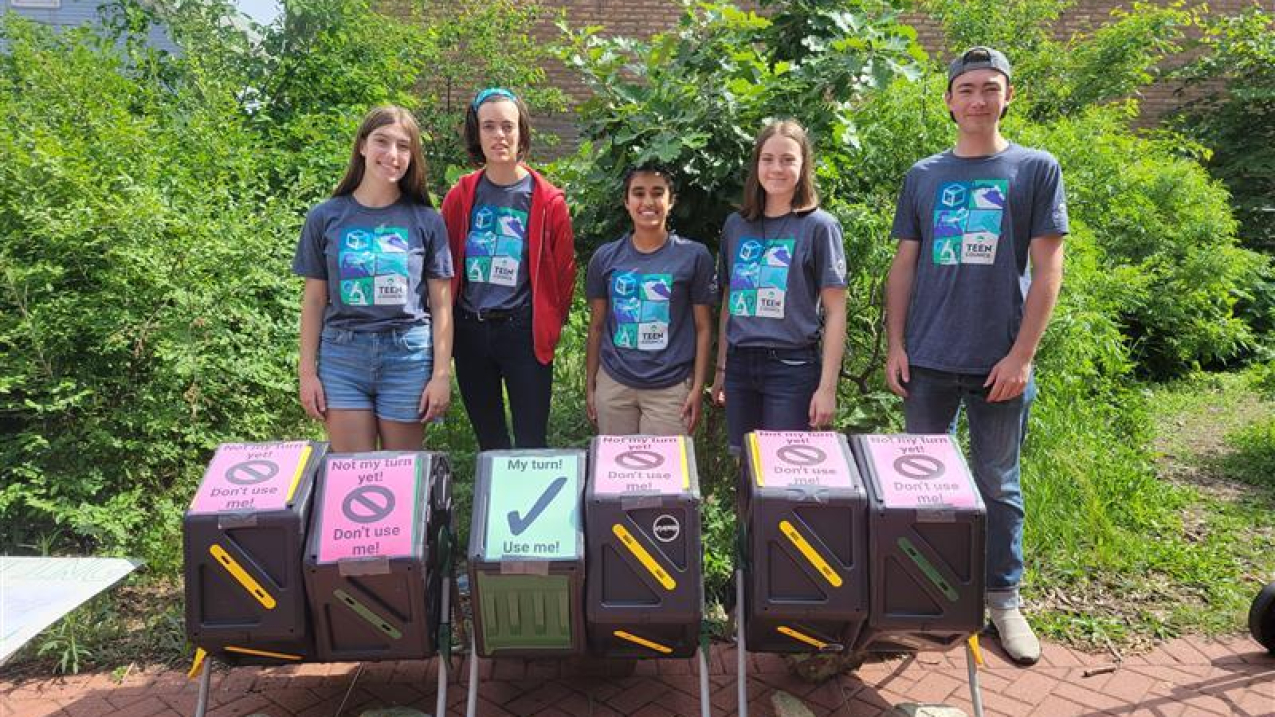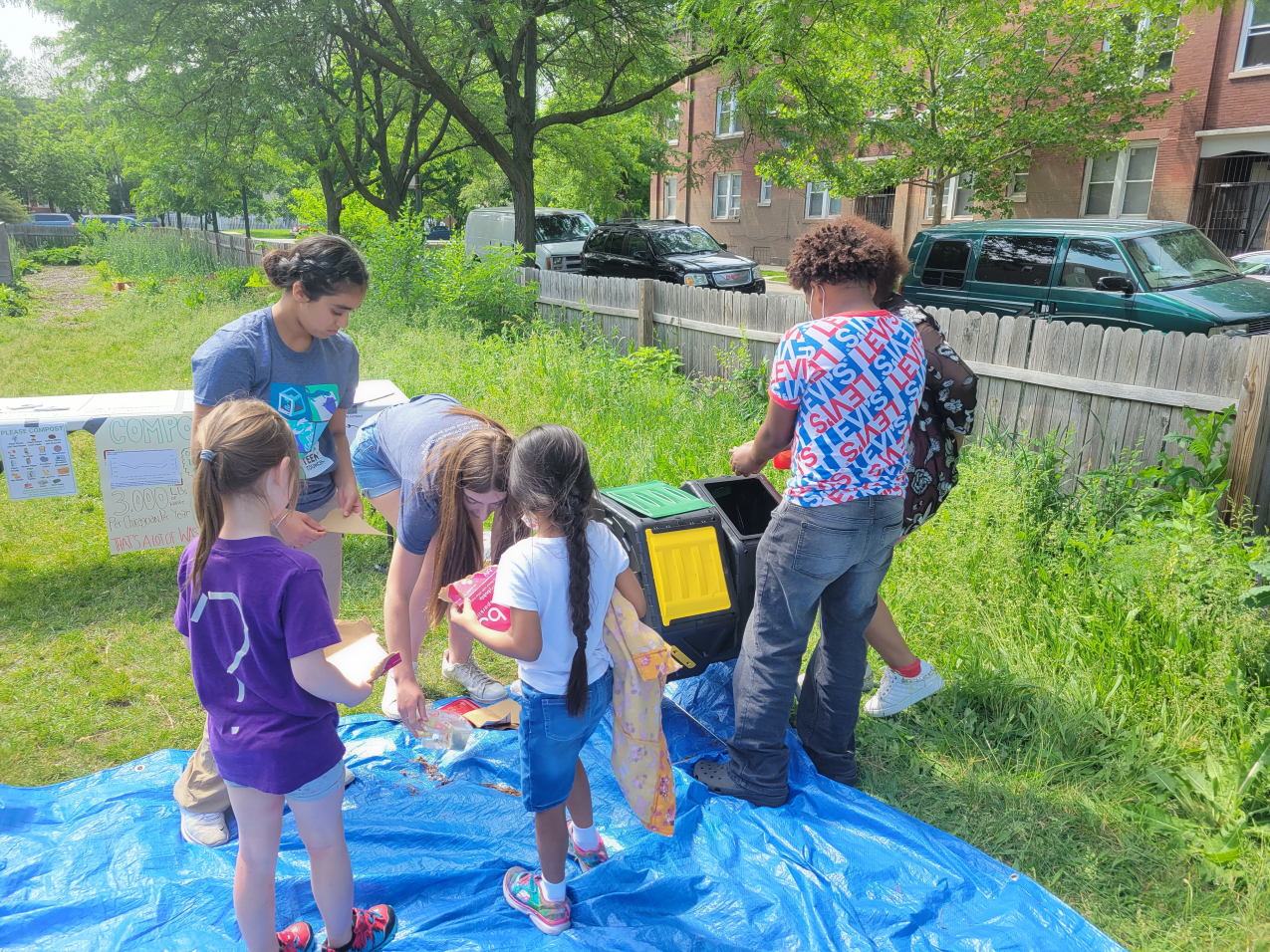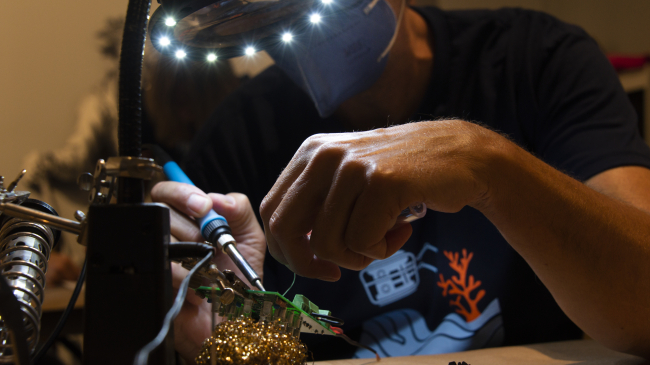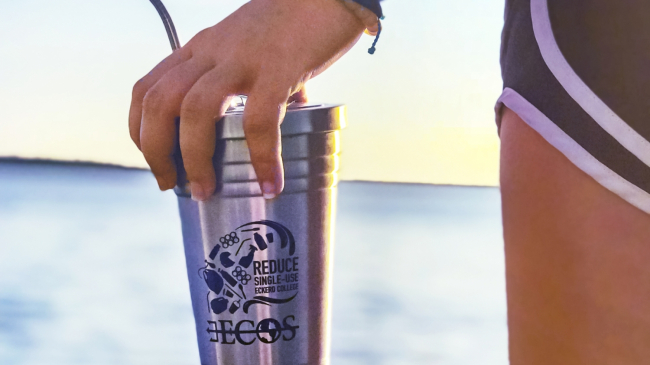Read all
More stories in Goal 2
Sitting on the edge of Lake Michigan in Chicago, Illinois, Shedd Aquarium offsite link sparks curiosity and compassion for aquatic life for the 1.5 million people who visit the institution every year. Shedd Aquarium is one of 25 aquariums and marine science education centers across North America that make up the Coastal Ecosystem Learning Centers (CELC) network. Together, this network engages the public in protecting marine and freshwater ecosystems and work on shared priorities, such as youth engagement.

Teen volunteers from Shedd Aquarium in Chicago, Illinois, Anne D., Tiegan D., Asees K., Lucinda L., and Tristan T, pose in front of various compost bins that were part of their Coastal Ecosystem Learning Centers Network action project.
Read all
More stories in Goal 2
The CELC network worked with a team of high school aquarium volunteers to plan the 2021 CELC Virtual Youth Summit, which brought together over 60 aquarium high school volunteers from the network to hear from more than 25 speakers on how to make a difference for the ocean through art, writing, advocacy, and more.
With funding support from NOAA and the North American Association for Environmental Education offsite link, the following team of six teens from Shedd Aquarium took what they learned from the summit and implemented a project to address environmental issues impacting their local community: Anne Dillon, Tiegan Duncan, Asees Khaira, Abigail Leyden, Lucinda Lodder Lindstrom, and Tristan Tucker. We asked the team to reflect on their project and share what they learned through their experiences.
Tell us the story of your project!
We set out to support the community around the South Branch of the Chicago River, and decided to ask them directly what it is they wanted in their community to benefit their environment. We created a partnership with Latino Youth High School, a school within several miles of the river, and sent out a survey to the students. The results overwhelmingly showed that the students — 21 out of 38 — wanted “Advocating for education on and access to recycling, compost, and proper trash disposal” as their number one choice. In order to fully address the needs of the community, our team split up. One half, the video team, addressed the “education” portion of the survey results by creating an educational video on proper waste management. The other half, the compost team, addressed the “access” portion by creating a project to provide a compost site to a community garden nearby. Teaming up with Latino Youth High School, as well as Hammond Elementary School, the compost team installed their compost site and hosted a training day for community members while the video team finalized their video.
What went well in the project, and what did not go according to plan?
Although our project went well, we had a number of obstacles that we faced. First of all, we had a member leave the team. We made a community survey that took longer than expected to be distributed and filled out. We had difficulties finding a partner interested in prolonging composting after the end of our project. We were even uncertain as to whether it would be possible to create a permanent composting site at all. However, we persevered and things worked out! We partnered with two different schools, an elementary school and a high school, and provided training to students about how to compost correctly. We even had enough money to buy gardening tools for them as well! In the future, we would focus even more on our community partnerships. We would also narrow the scope of our project more quickly, and promote our event more widely.

What impact did your project have?
- All members of the trainings practiced putting compost into the bins correctly.
- Participants knew more about appropriate compostable materials than when they started.
- We reached six public school students, ranging from preschoolers to high school seniors, six adults (parents and teachers), and the families from two schools who now have access to the compost site we built in their neighborhood.
- We will also reach more people with our video.
- We also took the opinions of 38 people into account through administering our survey.
- We provided the community garden with 111 gallons of composting space.
- We provided the community garden and partner schools with educational resources on composting, including information on how to and what to compost.
How did the project impact you?
The project impacted us in more ways than we expected. We learned not only practical skills that we will continue to use throughout our lives, but also overarching lessons about activism and creating change. We will continue to use tools such as how to run a training day, how to be better videographers, details on composting and waste management, as well as how it affects our waterways, and learning to work as a team through obstacles like Zoom and conflicting schedules. In a grander scheme, we saw firsthand how a project can benefit a waterway without even directly working on it. Further, we internalized how, although we are teenagers with little experience, we were still able to make a positive impact on our community, proving that passion and teamwork, not age or prior knowledge, is what allows someone to create change. We also gained experience navigating large organizations and understanding the timelines they work by, as well as experience with upholding brand values. And the power of friendship 🌈.




